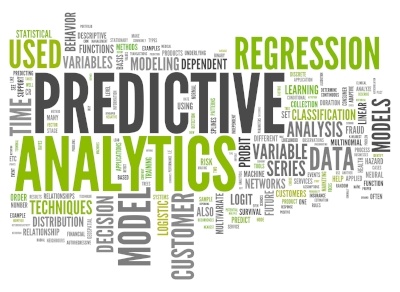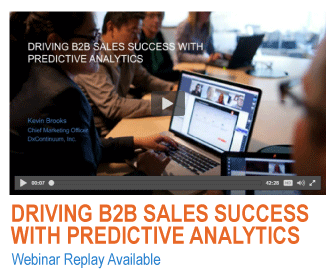Predictive analytics is a fast-emerging category in marketing and sales technology. It is also something of a buzzword, but even with the surge in growth for this type of software not many people really have a grasp on what predictive means or how it can help their sales performance. Let’s take a look at a few of the big misconceptions about predictive analytics.
This Can't Be Real
 One issue we occasionally run into here at DxContinuum is that people simply don’t believe that predictive is real. The idea that someone can just predict which opportunities will be successful sounds too good to be true, and it can seem like some sort of black box voodoo using old street tricks.
One issue we occasionally run into here at DxContinuum is that people simply don’t believe that predictive is real. The idea that someone can just predict which opportunities will be successful sounds too good to be true, and it can seem like some sort of black box voodoo using old street tricks.
This couldn’t be further from the truth. Everyone sits down at the end of the quarter to discuss performance and what they need to do to correct a bad trend or continue a good one. We’re doing that too, but we’re doing it in real time, bringing in science and algorithms that can approach the problem in a systematic and analytical way instead of just taking our best guesses. Think of it like a weather forecast that predicts a percent chance of rain, not just rain. This kind of predictive forecast continuously adjusts based on new meteorological developments. Similarly, DxContinuum predictions are forecasts that give the probability of success, and are adjusted in real time based on new information.
It's For Lead Generation, Right?
Another misconception is that predictive is only about generating demand. The idea is that predictive analytics helps marketing teams decide what companies and industry sectors to pursue.
While generating demand is definitely important, we go a bit deeper and take a slightly different approach here at DxContinuum. The idea behind predictive in our solutions is to look at all existing data – everything, no matter how incomplete or dirty -- and based on that, to optimize the existing sales funnel to help sales and marketing prioritize actions that will lead to a closed deal. It is complimentary to demand-generating predictive, and it is far more accurate at predicting wins, losses and price points. We don’t need to search for data externally; we look at the past and use that to help the customer make the best sales decisions.
Takes Forever
One last thing that many people worry about when it comes to predictive is how much data it requires, and the resulting time frame. The assumption is that predictive takes enormous amounts of data that takes a long time to gather and analyze. While that may have once been the case, new approaches turn that assumption upside down. In fact, a smaller data set will work just fine provided that the data is useful and provides the minimal required metrics. Our platform also can produce results very quickly, and does not require extended analysis to deliver useful information to the user.
Predictive is not perfect, but we don’t pretend it is. It’s not about knowing the future, it’s about making a forecast based on data, analysis and science, and most importantly, it’s about helping sales teams make the best decisions. Our platform is designed to make use of data efficiently and effectively in order to help business succeed.
If you’re new to the idea of predictive analytics, don’t fall into the trap of these old assumptions. New approaches like those we use at DxContinuum are part of an exciting business trend as predictive analytics becomes more integrated with daily operations at companies of all sizes. We predict they’ll be coming your way sooner than you think.





